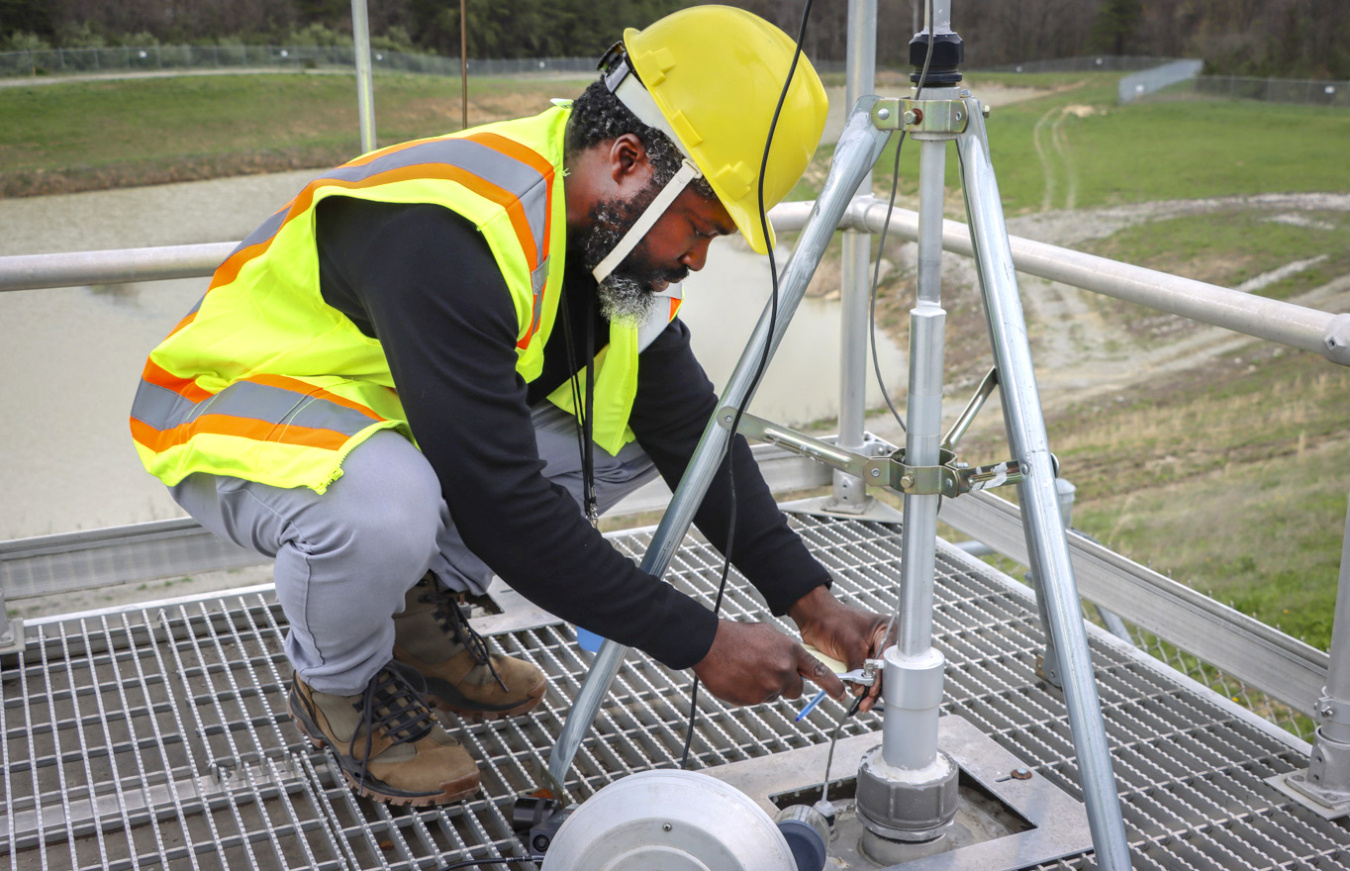Environmental Monitoring

The Portsmouth Site has an extensive monitoring program that samples for radiological and chemical contaminants in air, water, soil, sediment and biota (animals, vegetation, crops) on and near the plant site. Each year, more than 100,000 environmental monitoring data samples are collected, reviewed and reported. The results of these monitoring efforts are reported in the Annual Site Environmental Report (ASER). The ASER is prepared each year for the public.
Special Monitoring
The Portsmouth Site air-monitoring network provides a layering of air monitoring equipment from the project boundary to off-site locations. Using input from the community, DOE lessons learned, industry best practices and meteorological data, DOE worked with Ohio EPA and Ohio Department of Health (ODH) to co-locate 23 air-monitoring stations. In addition to DOE’s data, Ohio EPA and ODH air monitors provides independent confirmation of air quality data during demolition activities. Since demolition began at X-326 Process Building on May 17, 2021, there have been no elevated levels of air contamination above baseline.
During the demolition of X-326 Process Building, the airborne contamination was controlled by using adhesive fixative. This fixative was applied to the exterior and interior of the process building to lock down potential loose contamination that could be released into the air when demolition began. It was also applied to the piles of demolition debris on the ground. In addition, water misters suppressed dust during demolition in order to contain any contamination to a minimum.
Water on the site and at the OSWDF is also protected. Rainwater, dust-suppression water runoff from water misters, rainwater runoff, and any leachate from the lined OSWDF are treated. A water detention system was built around the perimeter of the X-326 Process Building to collect runoff water. The collected runoff was directed to the X-622-I Water Treatment Facility south of the site. Inside of the facility, there are five equalization tanks that can hold approximately 18,000 gallons of water. Water in these tanks travel to a pre-treatment clarifier, then on to the treatment plant where potential contaminants (e.g., metals, solids, volatile organic compounds, uranium and thorium) are removed so the water meets Ohio EPA standards before it is discharged through a permitted outfall.
Zahn's Corner Middle School
Located approximately 2.5 miles northeast of the Portsmouth Site, air monitors located adjacent to Zahn’s Corner Middle School detected very low levels of airborne neptunium in 2017 and americium nearby in 2018.
A separate report by Dr. Michael Ketterer of Northern Arizona University claimed the presence of enriched uranium within the school. The Scioto Valley Local School District Board elected to close the school on May 13, 2019.
In response to community concerns, DOE deployed an elite team of certified health physicists from DOE’s National Laboratories and the National Nuclear Security Administration to conduct the investigation at Zahn’s Corner Middle School, accompanied by representatives of the Ohio Department of Health and interested members of the Piketon community. The team of radiation safety experts collected 44 surface samples over the Memorial Day weekend, including specific areas requested by the community to be tested. Air samples also were collected from both inside and outside the school.
Results from sample analyses conducted by experts at Savannah River National Laboratory show no radioactivity detected above naturally occurring levels, and no cause for public health concern. There is no public health or safety risk from radioactive material preventing Zahn’s Corner Middle School from re-opening. DOE at each step conducted its investigation in a thorough and transparent process. Its experts, who conduct radiological investigations around the world, employed proven industry standards in gathering and analyzing the samples. DOE is committed to the safety, health and protection of its workforce, the public and the environment at all of its sites.
Additionally, DOE has committed to fund an independent third-party assessment for the Pike County community to include additional sampling and analysis in a scientifically sound and disciplined manner to address community concerns.
Analysis Report for Zahn's Corner Middle School Sampling Event
Sample Collection Methodology Summary

